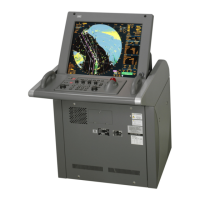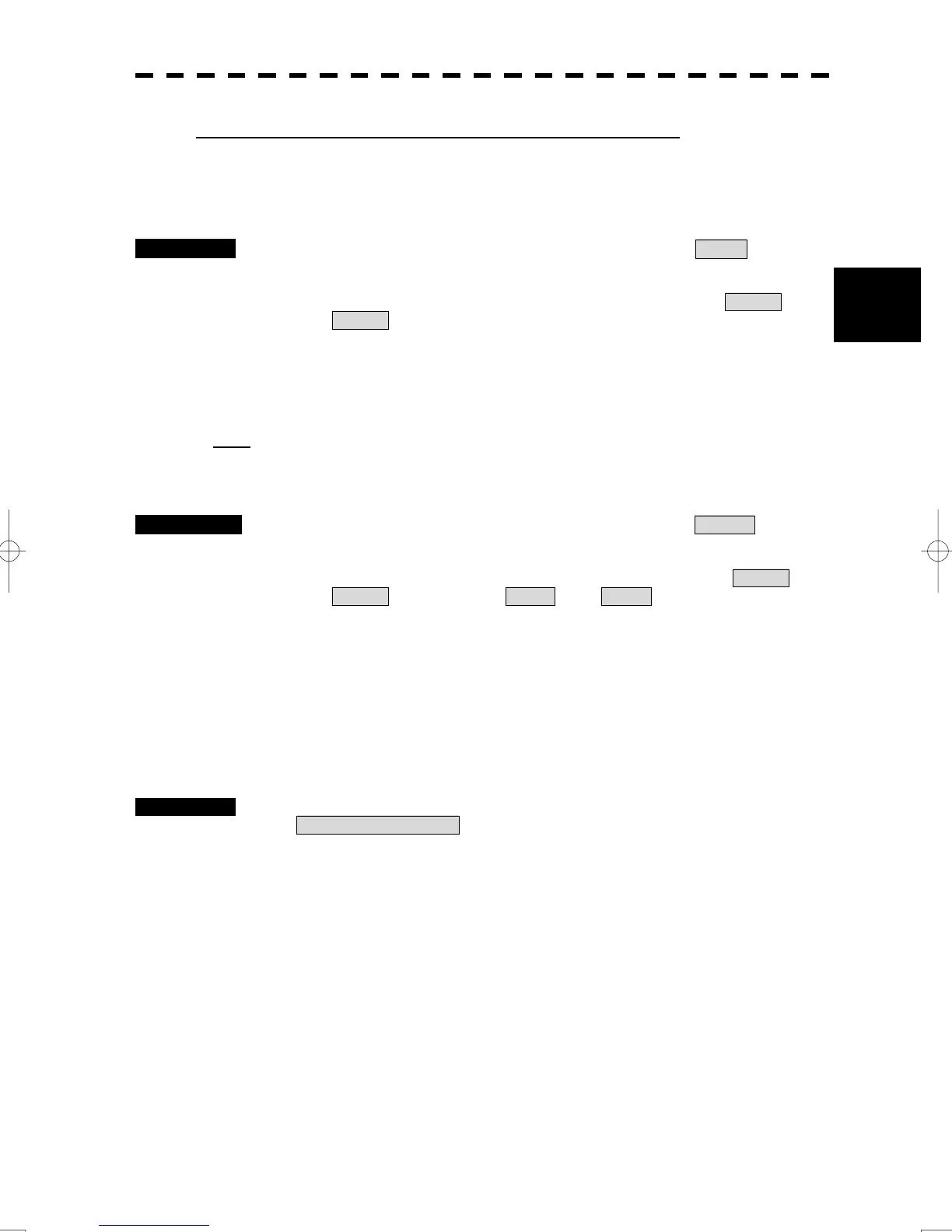3-12
3
3.2 Observe and Adjust Video
y
y y
Using the automatic rain / snow clutter suppression mode
The rain / snow clutter suppression in accordance with the intensity of rain / snow clutter is
possible. Use this mode when the rain / snow clutter's intensity differs according to directional
orientation.
Procedures 1 Press the [RAIN] dial. Alternatively, Left-click the Rain MAN button
located at the lower left of the display.
The automatic rain / snow clutter suppression mode is selected, and Sea AUTO ,
Rain AUTO is displayed in the lower left of the radar display.
2 Make adjustments by turning the [RAIN] dial and the [SEA] dial.
Even when the automatic rain / snow clutter suppression mode is selected, turning the
[RAIN] dial and the [SEA] dial can make fine adjustments manually.
Note:
When the automatic rain / snow clutter suppression mode is selected, the automatic sea clutter
suppression mode is also activated.
It is not possible to set only the rain / snow clutter suppression function to the automatic mode.
Cancellation 1 Press the [RAIN] dial. Alternatively, Left-click the Rain AUTO button
located at the lower left of the display.
The automatic rain / snow clutter suppression mode is cancelled, and Sea AUTO ,
Rain AUTO is changed to Sea MAN ,Rain MAN in the lower left of the radar
display.
3.2.7 Reset Alarm Buzzer [ALARM ACK]
When an audible alarm is issued, use ALARM ACK to acknowledge the alarm information, stop the
alarm buzzing, and stop the alarm lamp flashing. (If more than one alarm has occurred, press the switch
for each alarm indication.) The alarm stops buzzing, but the alarm indication does not disappear.
Procedures 1 Press [ALARM ACK] key. Alternatively, Left-click the
Alarm Acknowledge button located at the lower right of the display.
The alarm will stop buzzing.
※ The alarm can be also stopped buzzing by click the Alarm acknowledgment on the lower
right of the display. (See to the section “2.3 FUNCTIONS OF SOFTWARE
BUTTONS.”)

